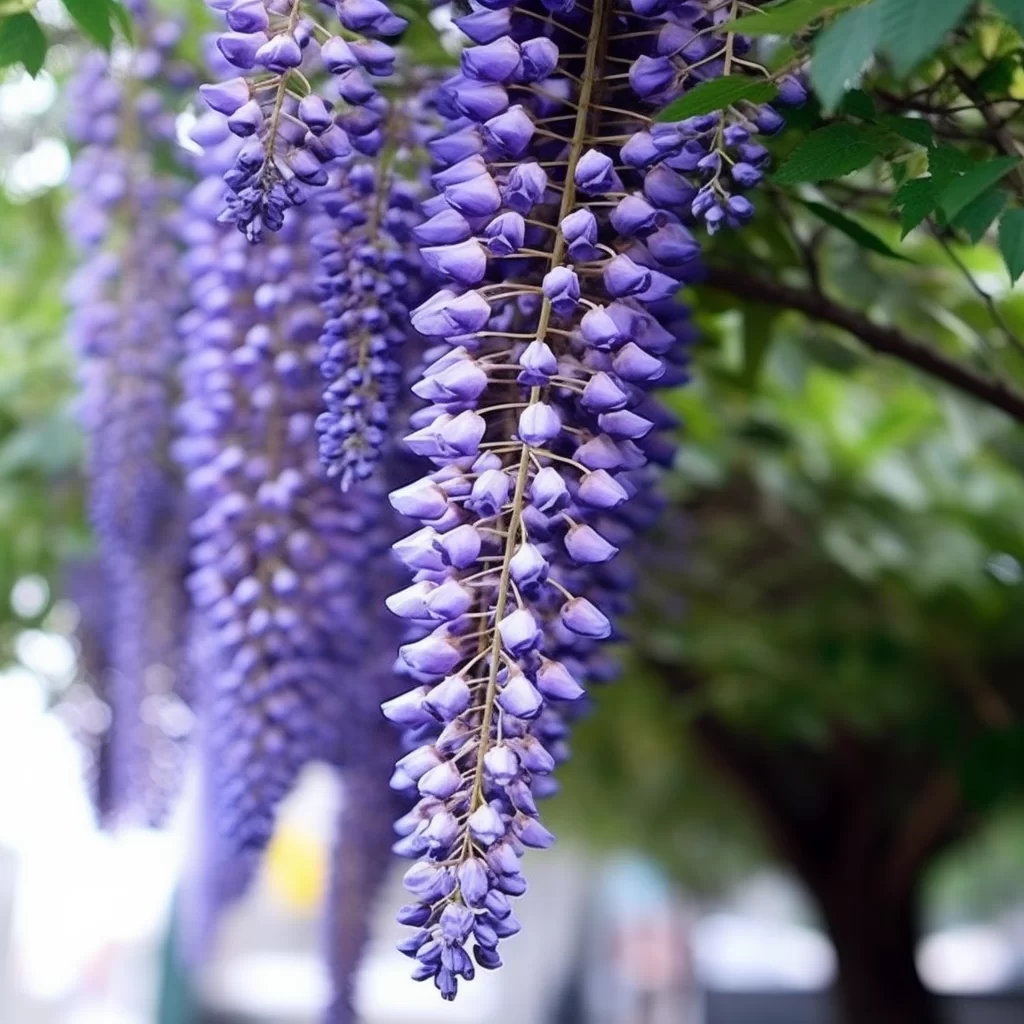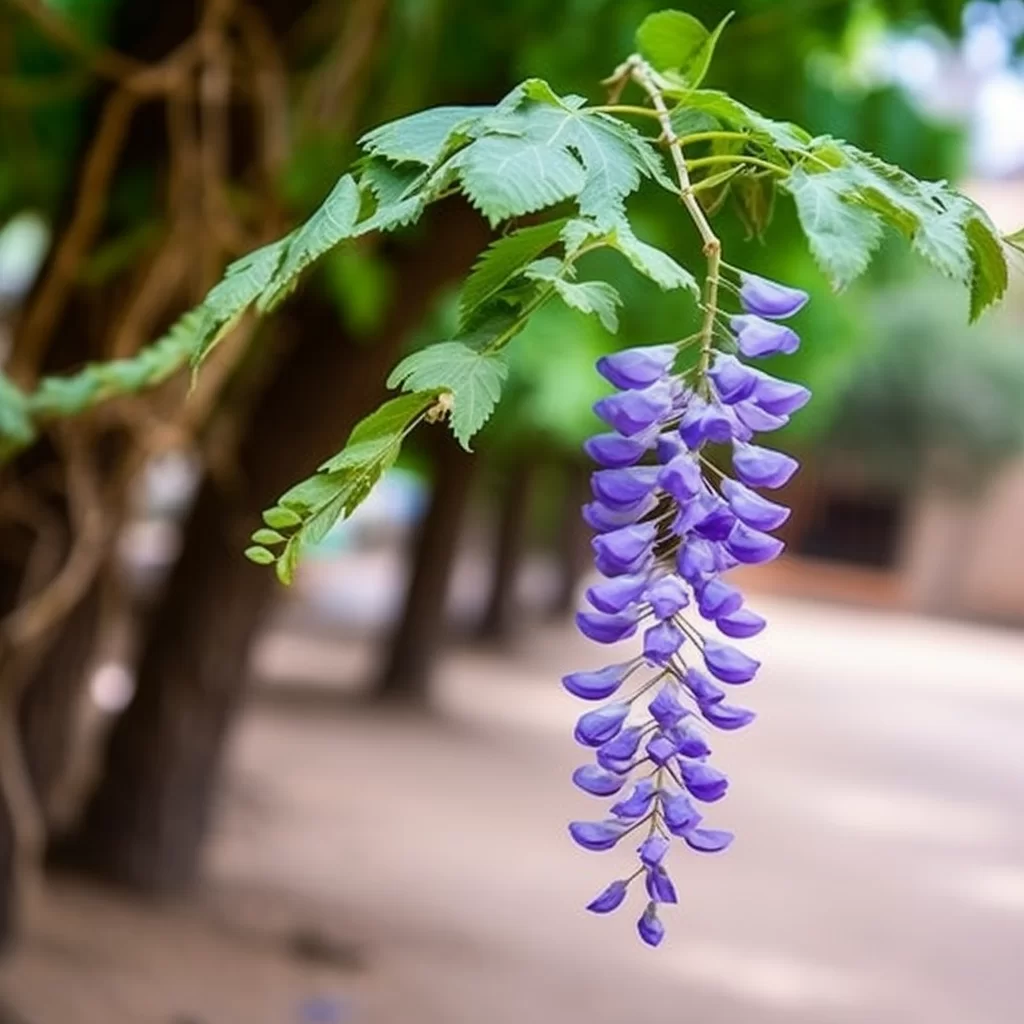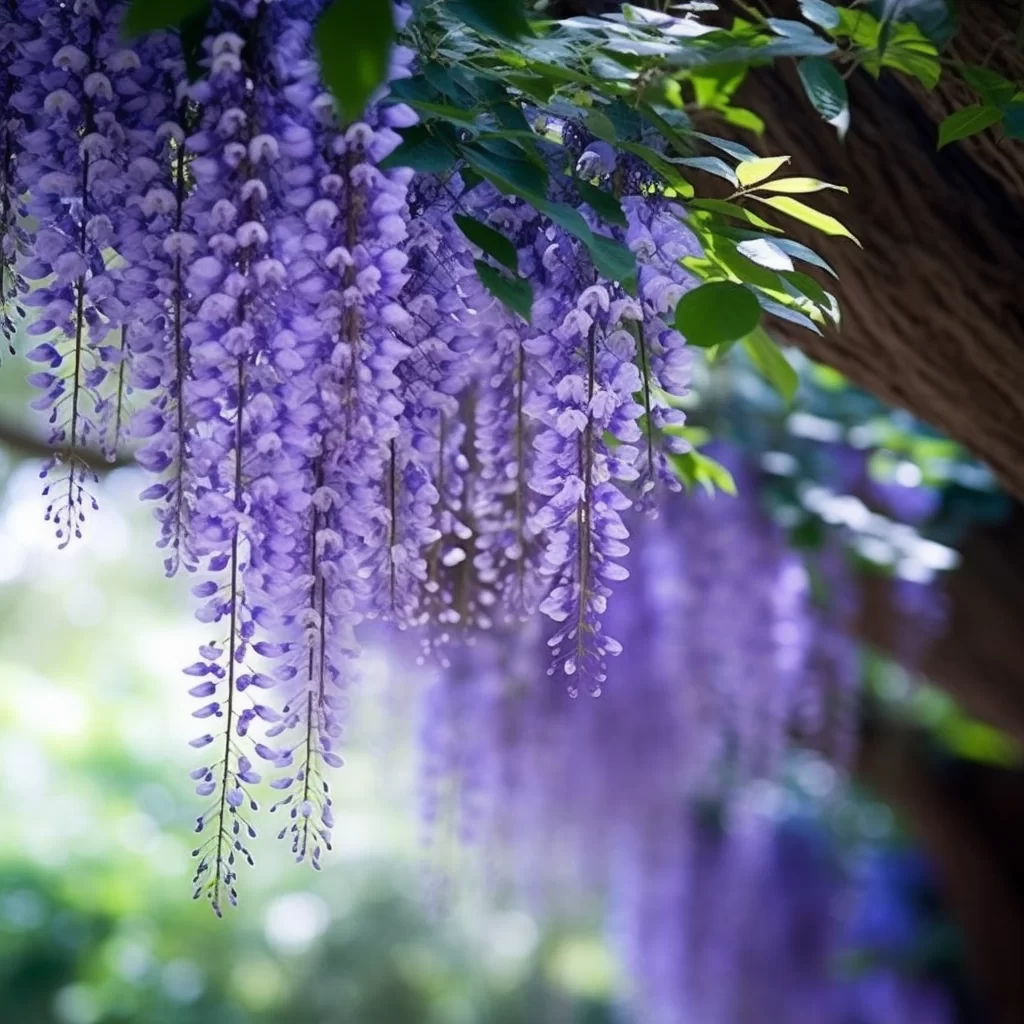Story of Day :
Contents
The Blue Moon Wisteria Plant: A Complete Guide and Care Tips
If you’re looking for a stunning, fragrant, and easy-to-grow plant with beautiful blue flowers that bloom in spring and summer, then the Blue Moon Wisteria is the perfect choice for you.
This plant belongs to the pea family (Fabaceae) and is native to East Asia.
It’s also known as Chinese wisteria or silky wisteria.
Appearance
The blue moon wisteria has long clusters of bicolored flowers that are light purple-blue in color with a fragrance that fills up your garden.
The flowers can reach up to 12 inches long and they bloom from late spring through early summer before turning into green seedpods.
This deciduous vine has pinnately compound leaves which are around 8-12 inches long with 9-13 leaflets.
The leaves turn yellow during fall before falling off during winter.

Planting
The best time to plant your Blue Moon Wisteria is in early spring or fall when temperatures cool down a bit but avoid planting it when there’s still frost on the ground.
- Select an area where your plant can get full sun exposure – at least six hours of direct sunlight each day would be ideal.
- Prepare the soil by digging a hole twice as wide as your pot but not too deep so that the top of its root-ball aligns evenly with ground level after planting.
- Add compost or well-rotted manure two weeks prior to planting; this enriches soil nutrients while also helping retain water levels better – an essential factor for growing healthy plants..
- Water deeply after planting; this helps settle soil around roots while also ensuring adequate moisture levels for the plant to thrive in the initial stages of growth.
- Consider providing a sturdy trellis, arbor, or pergola as support for your Blue Moon Wisteria vine to climb on.
This ensures that its stems don’t get tangled up with shrubs or other plants in your garden.
Care and Maintenance

The Blue Moon Wisteria is a hardy plant that requires minimal care once established.
Here are some tips on how to care for it:
- Water regularly during dry spells – this plant needs frequent watering during summer months when rainfall may be scarce.
- Fertilize with phosphorus-rich fertilizer in spring before new growth emerges; this promotes healthy roots and strong stem development.
- Prune annually after flowering – trim back branches that have bloomed by cutting them down to two buds from your main branch; this encourages new growth and blooms next season while also keeping the plant from becoming too unruly.
- Mulch around base – add mulch around the base of the plant every spring or fall; this helps retain moisture levels while also suppressing weed growth.
Pests and Diseases
The Blue Moon Wisteria is generally free from pests but can occasionally be attacked by spider mites or aphids which can be treated using insecticidal soap.
It’s important not to over-water as damp soil conditions can attract fungal diseases like root rot which causes wilting leaves, brown roots and stunted growth.

Conclusion
In conclusion, growing the Blue Moon Wisteria Plant is an excellent way to add color, fragrance, and beauty to your garden with minimal effort involved – making it a perfect choice for both novice gardeners looking for easy-to-grow plants as well as seasoned gardeners who want to add more variety to their gardens.
With just a little care and attention, this plant can thrive in your garden for many years.
Happy gardening!